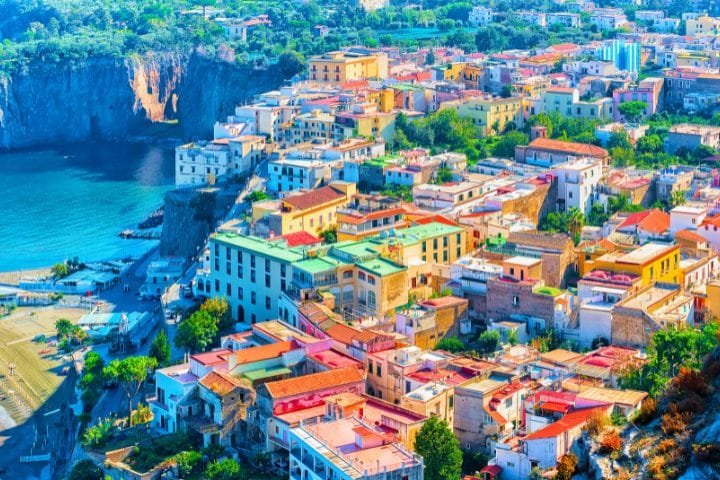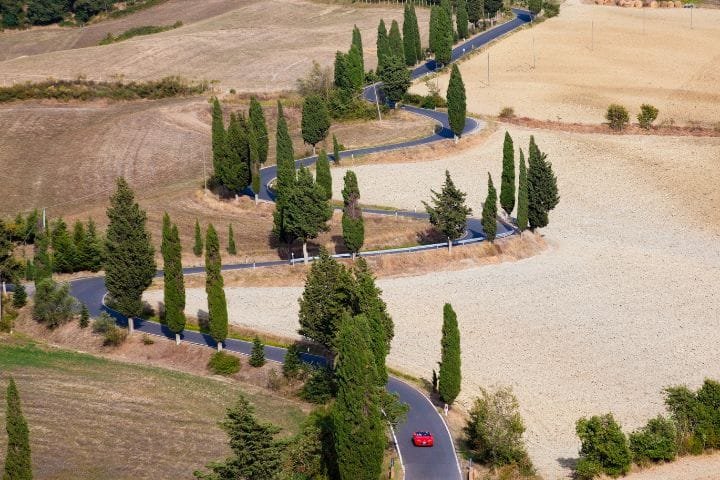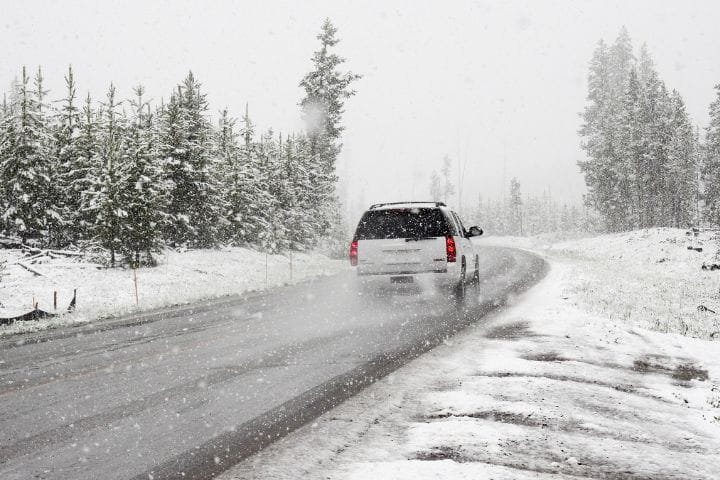Where to Park in Rome When Arriving by Car: Best Garages, ZTL Zones & Tips (2025)

by Tim | Last Updated December 11, 2025

Driving to Rome and feeling overwhelmed about where to park? Trust me, I completely understand that anxiety! After countless visits to the Eternal City over the past two decades, I’ve learned that parking in Rome is like solving a complex puzzle – but once you know the rules, it’s totally manageable.
The biggest challenge isn’t just finding a parking space; it’s avoiding those dreaded ZTL (Limited Traffic Zone) fines that can cost you €100+ weeks after your vacation ends.
The reality is that Rome wasn’t built for cars – those narrow medieval streets and ancient layouts create a parking puzzle that can be absolutely maddening if you don’t know the rules.
But here’s the thing: millions of people successfully park in Rome every year, and with the right knowledge, you can too without getting hit with expensive fines or spending hours circling the Colosseum.
Whether you’re planning a romantic weekend exploring ancient ruins or a family adventure through Italian history, understanding Rome’s parking system is crucial for a stress-free visit.
Let’s decode the mystery of Roman parking so you can focus on experiencing one of the world’s greatest cities instead of circling the blocks looking for a legal parking spot!
Understanding Rome’s ZTL Zones: Why You Can’t Drive Everywhere
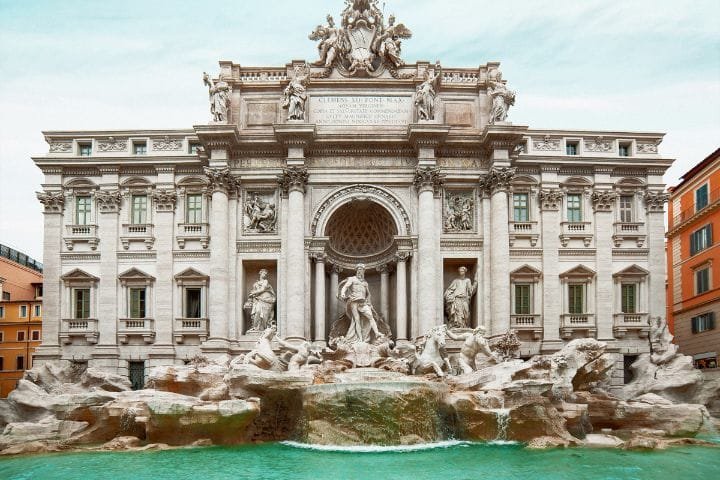
This is the big one that catches most tourists completely off guard. ZTL (Zona Traffico Limitato) zones are restricted traffic areas where only authorized vehicles can enter. Rome’s historic center is essentially one massive ZTL zone, and driving into it without permission will cost you dearly.
The ZTL system operates with over 120 cameras monitoring access points 24/7. These aren’t obvious speed cameras – they’re often small, mounted high up, and easy to miss. When you drive past one illegally, the camera photographs your license plate and automatically generates a fine that gets mailed to you weeks later.
ZTL restrictions typically apply:
- Monday through Friday: 6:30 AM to 6:00 PM
- Saturday: 2:00 PM to 6:00 PM
- Some areas have additional evening restrictions
- Holiday schedules can vary significantly
The fines are no joke – expect to pay €100-200 per violation, and you can get multiple fines for driving through different camera zones on the same trip. I’ve heard horror stories of tourists receiving five separate fines totaling over €800 from one unfortunate drive through the historic center.
Tourist exceptions are extremely limited. Some hotels can arrange temporary access permits, but this must be done in advance and involves significant paperwork. Don’t count on this unless your hotel specifically offers it as a service.
🛑 Rome’s ZTL System: What Visitors Must Know
Rome has some of the strictest ZTL zones in Italy — learn how to avoid accidental entries.
- Start with Italy’s complete driving laws, regulations & etiquette → Driving in Italy: Complete Guide
- Learn how ZTL zones work and which areas are restricted in Rome → Italy ZTL Zones Driving Guide
Best Parking Areas Near Major Attractions
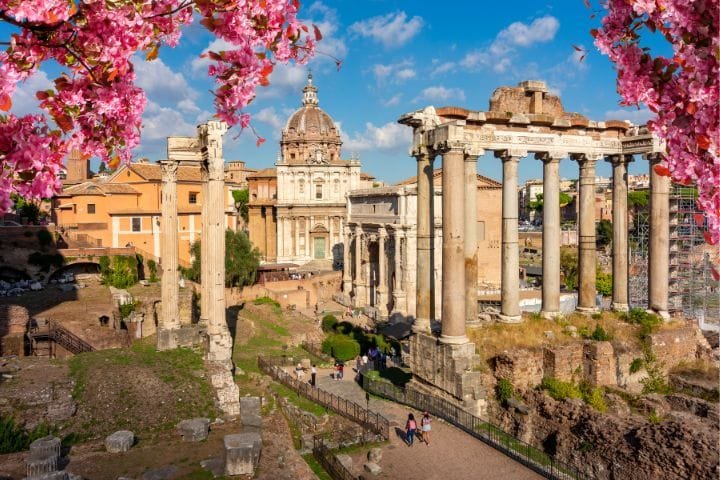
Colosseum and Roman Forum area parking is challenging because you’re right in the heart of tourist Rome. Your best bet is the Colle Oppio Park area, which has some street parking and is about a 10-minute walk to the Colosseum. There’s also a small parking area near San Giovanni in Laterano that’s slightly further but usually has more availability.
Vatican City and St. Peter’s area offer more parking options than the ancient Rome sites. The streets around Vatican City have metered parking, though it fills up quickly during peak season. Borgo Pio and the areas near Castel Sant’Angelo often have spaces, but expect to pay €2-3 per hour.
Spanish Steps and Trevi Fountain vicinity is basically a parking nightmare. The entire area is within the ZTL zone, so your best strategy is to park at one of the peripheral metro stations and take public transport. If you absolutely must park nearby, look for the garage under Villa Borghese, but expect to pay premium prices.
Pantheon and the historic center are completely within the ZTL zone, so forget about driving there. Park outside the restricted area and walk or use public transport. The walk from the Termini Station area to the Pantheon is about 20 minutes and takes you through some lovely Roman neighborhoods.
Trastevere neighborhood has limited street parking that’s highly competitive. This bohemian area across the Tiber has narrow streets and resident parking restrictions. Your best bet is parking near Porta Portese and walking into Trastevere, which is more pleasant anyway.
Plan Your Trip with Our Favorite Booking Tools
Recommended Parking Garages and Lots
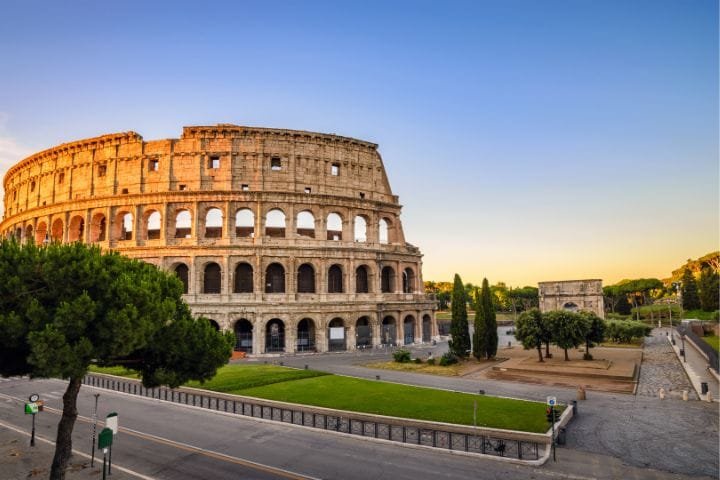
Terminal Gianicolo is my top recommendation for Vatican area visits. Located on the Janiculum Hill, it offers spectacular views of Rome and reasonable rates at €2 per hour or €20 per day. It’s about a 15-minute walk to St. Peter’s, mostly downhill, and the area feels safe and well-maintained.
Parking Villa Borghese provides excellent access to central Rome attractions. At €2.20 per hour, it’s pricier than peripheral options, but you’re paying for convenience and security. The location connects easily to the Spanish Steps, Via Veneto, and other high-end shopping areas via pleasant walking routes through the park.
EUR Parking might seem far from central Rome, but it’s a smart choice for budget-conscious travelers. At €1 per hour with excellent metro connections on Line B, you can reach the Colosseum in 20 minutes for the cost of a metro ticket (€1.50). The EUR district has modern parking facilities that are secure and well-lit.
Parking Ludovisi serves the luxury shopping district around Via Veneto and offers premium services at premium prices. Expect to pay €3+ per hour, but you’ll be walking distance from some of Rome’s finest hotels and restaurants. The facility includes valet services and enhanced security.
Budget-friendly peripheral options include parking at metro terminus stations like Battistini, Laurentina, or Anagnina. These locations charge €0.50-1.00 per hour and provide direct metro access to central Rome. The trade-off is additional travel time, but the savings can be substantial for longer stays.
Best Roman Parking Garages
Safest, most convenient garages for short stays or day trips.
- Understand how parking rules differ across Italy’s historic centers → Driving Culture & Road Etiquette in Italy
- Avoid ZTL traps around garage entrances → How to Avoid ZTL Zones in Italy
Get our FREE Italy
Travel Guide
E-Book
This printable guide is your ultimate companion for exploring Italy, with insider tips, detailed itineraries, transportation advice, must-see attractions, and more.

Park and Ride: Metro Connections from Suburbs
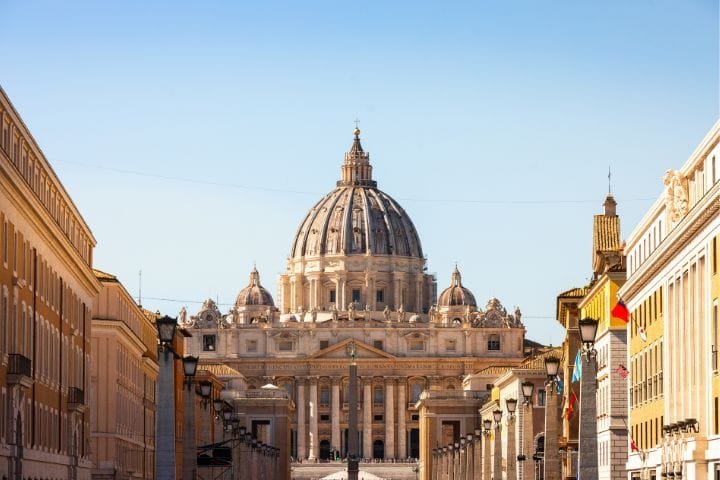
This is honestly my favorite strategy for visiting Rome by car. Metro Line A terminus parking at Battistini (northwest) or Anagnina (southeast) offers secure, affordable parking with direct connections to central Rome attractions.
Battistini Station advantages:
- Large parking area with good security
- Direct line to Vatican (Ottaviano station) and Spanish Steps (Spagna station)
- Rates around €0.50 per hour or €5-8 per day
- Less crowded than central parking options
Metro Line B terminus parking at Laurentina or Rebibbia provides similar benefits with a different routing. Laurentina connects you directly to the Colosseum (Colosseo station) and Termini Station, while Rebibbia serves the eastern suburbs and has ample parking space.
The beauty of this system is predictability – metro trains run every 5-10 minutes during peak hours, cost just €1.50 per ride, and eliminate the stress of navigating Roman traffic. A day pass costs €7 and covers unlimited metro, bus, and tram travel within Rome.
Cost comparison math: Central Rome parking can cost €20-30 per day, while peripheral parking plus metro tickets totals €8-12 per day. For multi-day visits, the savings add up quickly while actually providing better access to attractions.
🚇 Rome’s Smart Park-and-Ride Options
Save money and skip driving into the Centro Storico.
- Use accurate navigation tools to reach suburban parking stations → Best Navigation Apps for Italy
- Learn speed limits before entering busy urban corridors → Speed Limits in Italy for Tourists
Street Parking Rules and Regulations
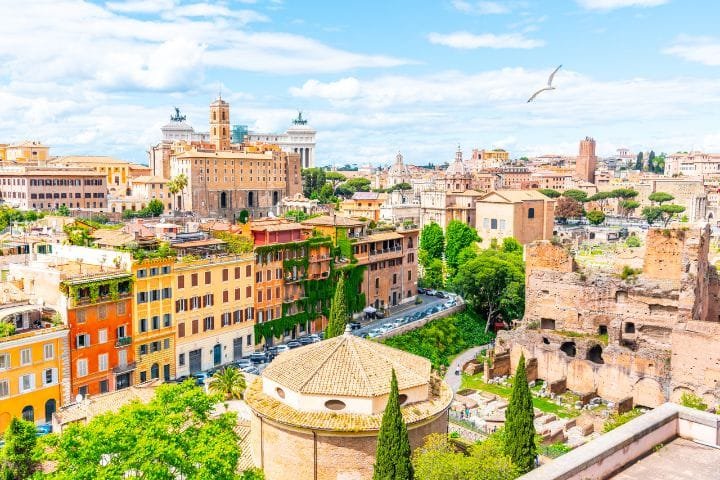
Parking in the Eternal City is one of those experiences that either makes you feel like a conquering gladiator or leaves you cursing ancient Roman city planners. The good news? Once you understand the system, it’s totally manageable.
Rome’s street parking operates on a color-coded system that’s logical once you understand it. Blue zones require payment via meters or SMS, typically costing €1-3 per hour, depending on the area. Payment is usually required Monday through Saturday from 8 AM to 8 PM, with Sundays often free.
White zones are free parking areas, but they’re increasingly rare in central Rome. When you find white zone parking, check carefully for time restrictions or resident-only signs. Some white zones have 1-2 hour limits enforced with parking discs.
Yellow zones are restricted parking for residents, disabled drivers, or commercial vehicles. Tourists should never park in yellow zones – the fines are expensive, and your car might be towed.
Parking disc requirements apply in some areas with time limits. You can buy these plastic discs (disco orario) at tobacco shops for a few euros. Set the disc to your arrival time and display it on your dashboard. Violating the disc parking rules results in fines similar to meter violations.
Resident exceptions create confusion for tourists. Areas marked “eccetto residenti” (except residents) mean locals can park there, but visitors cannot. These signs are often in Italian only, so when in doubt, don’t risk it.
Hotel Parking and Valet Services

Hotels with private parking are rare in central Rome but incredibly valuable when available. Luxury hotels like Hotel de Russie or The First Roma Arte offer valet parking services, though rates can be €40-60 per night. The convenience and security often justify the cost for high-end travelers.
Valet parking procedures typically involve surrendering your keys upon arrival and having your car retrieved when needed. This service eliminates parking stress but requires advance notice for car retrieval. Some hotels limit valet hours, so confirm availability for early departures or late arrivals.
Hotel partnerships with nearby garages are increasingly common. Many hotels negotiate discounted rates with area parking facilities, sometimes saving guests 20-30% compared to standard rates. Always ask about parking options when booking your accommodation.
Booking parking with accommodation often secures better rates than arranging parking separately. Some hotel booking platforms include parking in package deals that can be more economical than individual bookings.
Luxury hotels often offer complimentary parking for suite guests or elite members. These extras can significantly impact your total Rome budget, especially for longer stays.
Parking Costs and Payment Methods
Hourly rates in Rome vary dramatically by location and proximity to attractions. Central Rome garages charge €2-4 per hour, while peripheral parking costs €0.50-1.50 per hour. Street parking in blue zones typically runs €1-3 per hour with 2-3 hour maximum stays.
Daily parking costs range from €8-12 at suburban metro stations to €25-40 in premium central locations. Weekly rates sometimes offer 10-15% discounts, while monthly parking can provide substantial savings for extended stays.
Payment methods have modernized significantly. Most facilities now accept credit cards, while mobile payment apps like EasyPark or Pyng are becoming popular for street parking. However, always carry cash as backup since some older meters and smaller lots remain cash-only.
Parking validation opportunities exist at some restaurants, shops, and attractions. Ask if your destination offers parking validation – even 30-60 minutes of free parking can offset meal costs at participating establishments.
Hidden fees to watch for include lost ticket charges (€20-50), height restrictions for larger vehicles, and premium rates during special events or holidays. Some garages charge extra for overnight parking or weekend rates.
Safety and Security Considerations
Vehicle security varies significantly by Rome neighborhood. Well-lit, monitored parking garages near major attractions are generally safe, while isolated street parking in peripheral areas carries higher theft risks. Never leave valuables visible in your car, regardless of location.
Theft prevention basics include removing GPS devices, phone mounts, and any bags from sight. Lock your car completely and consider using visible anti-theft devices like steering wheel locks, especially for rental cars that might appear to contain tourist belongings.
Well-monitored parking facilities typically feature security cameras, regular patrols, and controlled access. These amenities cost more but provide peace of mind, especially for travelers with expensive rental cars or those carrying valuable equipment.
Insurance considerations for rental cars include understanding your coverage for theft, vandalism, and parking-related damage. Italian parking spots are often tight, and minor scrapes are common. Comprehensive insurance becomes more valuable in Rome’s challenging parking environment.
Emergency contacts should include your rental car company’s local number, insurance provider, and local police (113). Save these numbers before arriving and keep them easily accessible while exploring Rome.
🔐 Stay Safe While Parking in Rome
Learn where theft risks are higher and how to avoid parking scams.
- Review safe-driving practices and etiquette → Driving Culture & Road Etiquette in Italy
- Know legal requirements & what to carry if approached by police → Car Insurance Requirements in Italy
- Check winter or summer conditions if visiting seasonally
→ Essential Winter Driving Tip
→ Driving in Italy During Summer Heatwave
Mastering Roman Parking
Look, parking in Rome will never be as easy as parking at a suburban mall, but it doesn’t have to ruin your vacation either. The key is understanding that Rome’s historic center is essentially off-limits to tourist vehicles, and planning accordingly with peripheral parking and public transport connections.
My biggest recommendation? Use the park-and-ride system at metro terminus stations. You’ll save money, avoid ZTL fines, and actually get better access to major attractions than if you tried to park centrally. The metro system is efficient, safe, and connects all the sites you want to see.
For shorter visits or when convenience trumps cost, choose secure parking garages near your hotel or major attractions. Yes, you’ll pay more, but the time and stress savings can be worth it, especially for families with young children or travelers with mobility concerns.
Remember that Romans have been dealing with traffic and parking challenges for literally thousands of years – from chariot traffic jams to modern ZTL zones. Approach it with patience, humor, and good planning, and you’ll conquer Roman parking just like Caesar conquered Gaul. Well, maybe with less bloodshed and more credit card payments, but you get the idea!
The goal is enjoying Rome’s incredible history, art, food, and culture, not spending your vacation stressed about parking. Plan ahead, choose the right parking strategy for your needs and budget, and get ready to fall in love with one of the world’s greatest cities! Buon Viaggio!
Plan Your Trip with Our Favorite Booking Tools
Essential FAQs: Where to Park in Rome When Arriving by Car
Can I drive and park in Rome’s historic center?
No, you cannot legally drive in Rome’s historic center due to ZTL (Zona Traffico Limitato) restrictions. The area around major attractions like the Colosseum, Pantheon, Trevi Fountain, and Spanish Steps is completely off-limits to tourist vehicles.
Your best strategy is parking outside ZTL zones and using public transportation or walking to reach attractions.
What’s the best parking strategy for visiting Rome by car?
Use the park-and-ride at metro terminus stations like Battistini, Laurentina, or Anagnina. These locations offer secure parking for €0.50-1.00 per hour (€5-8 daily) with direct metro connections to central Rome.
A metro ticket costs €1.50, and a day pass is €7 for unlimited travel. This strategy saves €10-20 daily compared to central parking while providing better access to attractions.
How much does parking cost in Rome, and where are the best locations?
Parking costs vary dramatically by location. Central Rome garages charge €20-40 daily, while peripheral metro station parking costs €5-12 daily.
Recommended options include Terminal Gianicolo near the Vatican (€20/day), Villa Borghese for central access (€2.20/hour), and EUR with metro connections (€1/hour).
Street parking in blue zones costs €1-3 hourly with 2-3 hour limits. Always carry cash as backup since some meters are cash-only. Weekly stays sometimes offer 10-15% discounts at major facilities.
What are Rome’s street parking rules, and how do I avoid fines?
Rome uses a color-coded system: blue zones require payment (€1-3/hour), white zones are free but rare with time limits, and yellow zones are restricted (never park here as a tourist).
Payment is typically required Monday-Saturday, 8 AM-8 PM, with Sundays often free. Some areas require parking discs (disco orario) showing arrival time – buy these at tobacco shops.
Always check for “eccetto residenti” (except residents) signs that exclude tourists. Violating parking rules results in fines similar to ZTL violations, so when in doubt, choose paid parking garages instead.
Is hotel parking worth the cost in Rome?
Hotel parking can be worth it for convenience despite high costs (€40-60/night at luxury hotels). Benefits include valet service, enhanced security, and elimination of parking stress.
Many hotels offer partnerships with nearby garages at 20-30% discounts compared to standard rates. Always ask about parking options when booking – some hotels include parking in package deals that are more economical than separate arrangements.
For budget travelers, hotel parking rarely makes financial sense compared to peripheral park-and-ride options, but luxury travelers often find the convenience justifies the premium cost.
🚗 Plan Smarter for Your Rome Driving Experience
- Italy’s full driving rules & etiquette → Driving in Italy Guide
- Understand documentation required when hotels report your license plate → IDP Italy Requirements
- Learn ZTL restrictions before entering Rome → Italy ZTL Zones Guide
- Learn speed limits before entering busy urban corridors → Speed Limits in Italy for Tourists
- Avoid ZTL traps around garage entrances → How to Avoid ZTL Zones in Italy
- Parking rules in other major Italian cities → Where to Park in Florence
- Best apps for avoiding restricted areas → Navigation Apps for Italy
💬 We’d love to hear from you!
Have questions, tips, or personal travel stories to share? Drop them in the comments below — your insights help fellow travelers plan their adventures too.


